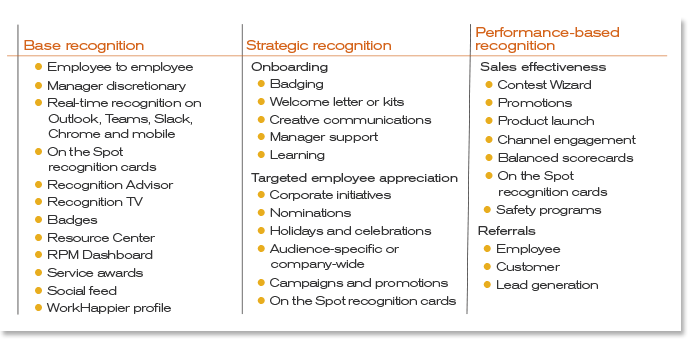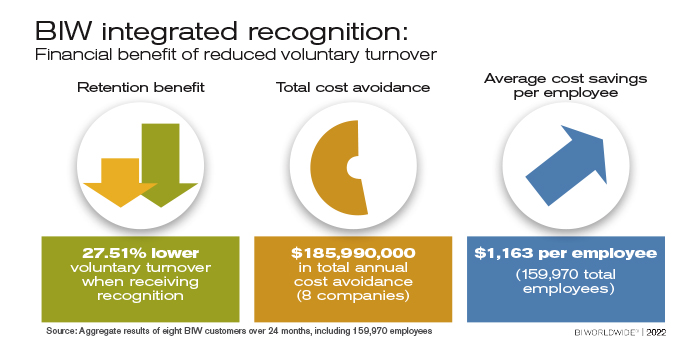We’ve all heard the line, “A company’s greatest asset is its people.” We’ve probably all said it at one time or another too. But the truth is, companies can have vastly different strategies when it comes to actually responding to it.
__________
If you view employees as your company’s greatest asset, your relationship with them must be handled carefully. That care can come in the form of many things from fair pay, an inclusive work culture and equitable career opportunities, as well as employee recognition and rewards. How you recognize and reward your workforce is the essence of your company’s employee value proposition or EVP; it’s what you offer employees in exchange for their time, talent and commitment.
Commitment can be quantified in a measure called eNPS, or employee net promoter score. eNPS is derived from the question, “How likely are you to recommend this company (or program or initiative) to others?” to provide a basic understanding of an employee’s level of satisfaction and engagement. It’s the first step toward knowing if you’re providing the right employee experience – one they value and find motivating.
While you are likely already investing time and resources in employee engagement and recognition, how do you know if you’re investing wisely?
At BI WORLDWIDE, we believe the best and most impactful way to utilise your recognition budget is to implement a three-dimensional strategy that encompasses base recognition, strategic recognition and performance-based recognition. Each of these levels has its own distinct focus, features and programs.

This three-dimensional, integrated recognition strategy has been implemented by multiple BIW clients and has led to significant reductions in voluntary turnover and major financial benefits as evidenced below.

As you evaluate your current employee recognition spend, ask yourself these questions:
- Is it having a multi-layered impact on your company?
- Is it helping you retain your best and most productive employees?
- Is it saving you money via the cost avoidance of employee retention, and making you money via the revenue generation from increased performance and production?
- Is it creating “cultural champions” – loyal, engaged employees who will actively promote your process, your products and services and your brand?
